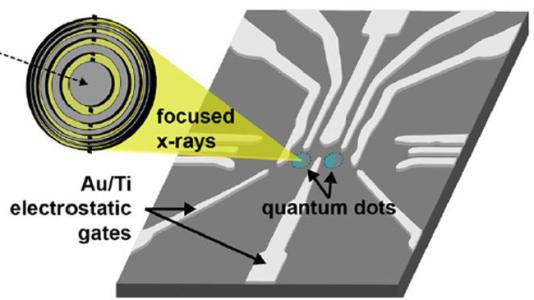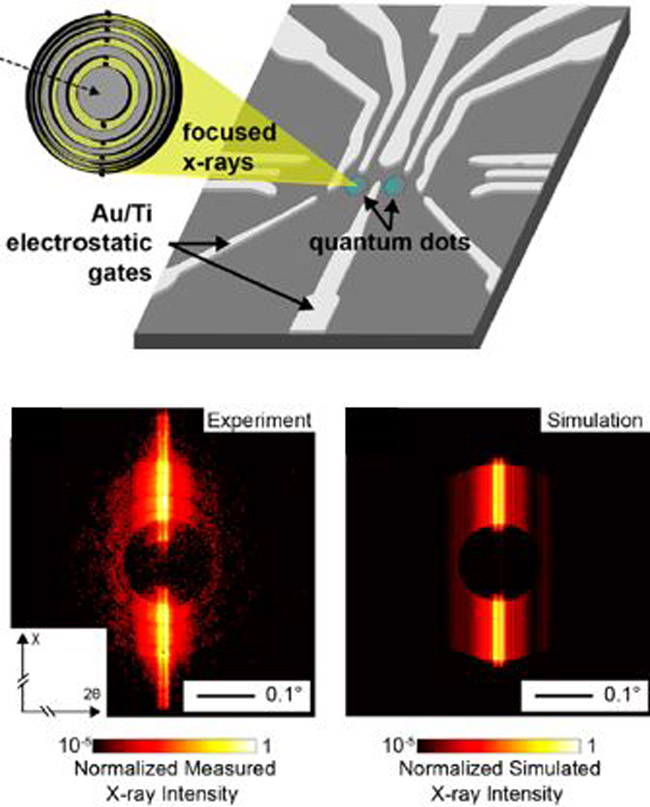
Scientific Achievement
Combining X-ray nanodiffraction with dynamical X-ray diffraction modeling reveals buried strain in quantum devices formed at interfaces in a thin-film hetero-structure, without a need for sectioning the sample.
Significance and Impact
Elastic distortions in active areas of GaAs/AlGaAs heterostructures will impact their use in quantum electronics based on coupled quantum dots.
Research Details
- Nanoscale variations of stress in GaAs heterostructures change the potential energy landscape of the two-dimensional electron gas limiting the control of quantum devices.
- The structure was measured without perturbing the stress state by using a new combination of x-ray dynamical diffraction modeling and nanoscale scanning x-ray diffraction microscopy (nano-SXDM) at the CNM / APS Hard X-ray Nanoprobe.
DOI: https://doi.org/10.1021/acs.nanolett.7b04603
Work was performed in part at the Center for Nanoscale Materials and Advanced Photon Source.
About Argonne’s Center for Nanoscale Materials
The Center for Nanoscale Materials is one of the five DOE Nanoscale Science Research Centers, premier national user facilities for interdisciplinary research at the nanoscale supported by the DOE Office of Science. Together the NSRCs comprise a suite of complementary facilities that provide researchers with state-of-the-art capabilities to fabricate, process, characterize and model nanoscale materials, and constitute the largest infrastructure investment of the National Nanotechnology Initiative. The NSRCs are located at DOE’s Argonne, Brookhaven, Lawrence Berkeley, Oak Ridge, Sandia and Los Alamos National Laboratories. For more information about the DOE NSRCs, please visit https://science.osti.gov/User-Facilities/User-Facilities-at-a-Glance.
Argonne National Laboratory seeks solutions to pressing national problems in science and technology. The nation’s first national laboratory, Argonne conducts leading-edge basic and applied scientific research in virtually every scientific discipline. Argonne researchers work closely with researchers from hundreds of companies, universities, and federal, state and municipal agencies to help them solve their specific problems, advance America’s scientific leadership and prepare the nation for a better future. With employees from more than 60 nations, Argonne is managed by UChicago Argonne, LLC for the U.S. Department of Energy’s Office of Science.
The U.S. Department of Energy’s Office of Science is the single largest supporter of basic research in the physical sciences in the United States and is working to address some of the most pressing challenges of our time. For more information, visit https://energy.gov/science.
